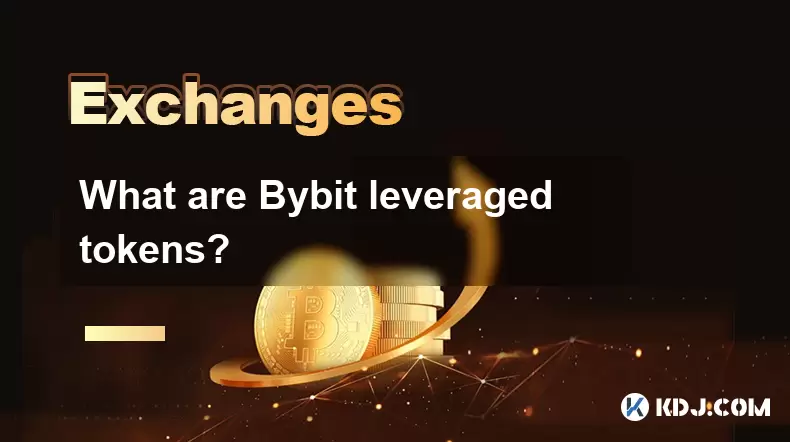-
 Bitcoin
Bitcoin $115200
1.46% -
 Ethereum
Ethereum $3672
2.95% -
 XRP
XRP $3.004
1.51% -
 Tether USDt
Tether USDt $1.000
0.04% -
 BNB
BNB $772.6
3.15% -
 Solana
Solana $168.2
3.14% -
 USDC
USDC $0.9998
-0.01% -
 TRON
TRON $0.3365
1.44% -
 Dogecoin
Dogecoin $0.2053
3.66% -
 Cardano
Cardano $0.7414
2.80% -
 Hyperliquid
Hyperliquid $38.30
0.43% -
 Stellar
Stellar $0.3983
0.73% -
 Sui
Sui $3.496
3.19% -
 Bitcoin Cash
Bitcoin Cash $571.4
4.49% -
 Chainlink
Chainlink $16.75
2.91% -
 Hedera
Hedera $0.2440
2.21% -
 Ethena USDe
Ethena USDe $1.001
0.03% -
 Avalanche
Avalanche $22.18
2.14% -
 Litecoin
Litecoin $120.6
0.40% -
 UNUS SED LEO
UNUS SED LEO $8.991
0.05% -
 Toncoin
Toncoin $3.229
-0.62% -
 Shiba Inu
Shiba Inu $0.00001234
3.28% -
 Uniswap
Uniswap $9.757
3.45% -
 Polkadot
Polkadot $3.666
2.22% -
 Dai
Dai $1.000
0.01% -
 Monero
Monero $282.3
-4.49% -
 Bitget Token
Bitget Token $4.360
1.80% -
 Cronos
Cronos $0.1437
6.19% -
 Pepe
Pepe $0.00001050
4.21% -
 Aave
Aave $263.0
4.02%
What are Bybit leveraged tokens?
Bybit leveraged tokens offer 3x long or short exposure to crypto assets like BTC and ETH, with automated rebalancing, but carry risks like volatility decay and high fees, making them best for short-term trading.
Aug 07, 2025 at 01:01 am

Understanding Bybit Leveraged Tokens
Bybit leveraged tokens are financial instruments designed to provide amplified exposure to the price movements of underlying cryptocurrency assets, such as Bitcoin (BTC) or Ethereum (ETH), without requiring users to manage margin or collateral. These tokens are built to mirror the performance of leveraged positions—commonly 3x long or 3x short—on specific spot or futures markets. Unlike traditional perpetual contracts, leveraged tokens are self-contained assets that can be traded like regular tokens on Bybit’s platform. Each token’s value is recalculated periodically to maintain the targeted leverage, making them accessible to traders who want leveraged exposure without the complexities of margin management.
How Bybit Leveraged Tokens Work
These tokens function through automated rebalancing mechanisms managed by Bybit’s internal system. When market volatility causes the actual leverage ratio to deviate from the target (e.g., 3x), the system automatically adjusts the underlying positions to restore the desired leverage. This process occurs during significant price movements or at scheduled intervals. For example, if the price of BTC drops sharply, a 3x Long BTCUP token may see its leverage drift above 3x due to losses. The system then sells part of the position to reduce exposure and bring leverage back to 3x. This rebalancing helps maintain the intended risk profile but may result in compounding effects during volatile markets.
The net asset value (NAV) of each leveraged token is published in real time on Bybit’s platform. This NAV reflects the underlying value of the token based on the performance of the associated futures contract and the impact of funding fees, management fees, and rebalancing. Users can monitor the NAV to assess whether the token is trading close to its intrinsic value. Significant deviations between the market price and NAV may indicate temporary inefficiencies or high demand.
Available Leveraged Tokens on Bybit
Bybit offers a range of leveraged tokens across major cryptocurrencies. Each token has a standardized ticker format: the base asset, direction (UP for long, DOWN for short), and exchange. For instance:
- BTC3L represents a 3x long position on Bitcoin.
- BTC3S represents a 3x short position on Bitcoin.
- ETH3L and ETH3S follow the same pattern for Ethereum.
These tokens are available for trading 24/7, mirroring the continuous nature of crypto markets. They are settled in USDT, allowing users to enter and exit positions without converting between multiple currencies. The availability of tokens may vary based on market conditions, and Bybit may delist or restructure tokens during extreme volatility or low liquidity.
Trading Bybit Leveraged Tokens: Step-by-Step Guide
To trade leveraged tokens on Bybit, users must first access the leveraged tokens section of the platform. The process involves several key steps: - Log in to your Bybit account and navigate to the "Leveraged Tokens" tab.
- Select the desired token, such as BTC3L, from the list.
- Choose the amount of USDT to invest or specify the number of tokens to purchase.
- Review the current market price and NAV to ensure alignment.
- Confirm the transaction using the "Buy" or "Sell" button.
Selling tokens follows the same interface. Users should note that transaction fees apply, typically a small percentage of the trade value. It is crucial to monitor the real-time NAV and market price spread before executing trades. Large discrepancies may lead to slippage or unfavorable execution prices. Additionally, users can view historical performance, fee structures, and rebalancing logs directly on the token’s information page.
Risks and Considerations
While leveraged tokens simplify access to leveraged trading, they carry inherent risks. The most significant is volatility decay, also known as beta slippage, which occurs in sideways or highly volatile markets. Due to daily rebalancing, these tokens may underperform compared to holding a direct 3x futures position over extended periods. For example, if BTC fluctuates up and down by 5% over several days, the compounding effect of rebalancing can erode the token’s value even if the price ends unchanged.Another risk is liquidation risk, although it is managed by Bybit’s system. In extreme market conditions, the rebalancing mechanism may not act quickly enough, potentially leading to significant losses or token devaluation. Users should also be aware of management fees, which are deducted from the token’s NAV periodically. These fees vary by token but are typically around 0.1% per day for holding a position.
Furthermore, leveraged tokens are not suitable for long-term holding. Their design is optimized for short-term trading strategies, such as capitalizing on anticipated price movements within hours or days. Holding them over weeks or months increases exposure to compounding losses and fee erosion.
Frequently Asked Questions
What happens to my Bybit leveraged tokens during a market crash?
During a sharp market move, the system triggers automatic rebalancing to maintain the target leverage. If the price of the underlying asset drops rapidly, a 3x long token like BTC3L will have its position reduced to prevent leverage from exceeding safe levels. In extreme cases, the token’s value may decline significantly, but it does not result in negative balance due to the tokenized structure.Can I stake or earn yield on Bybit leveraged tokens?
No, Bybit leveraged tokens cannot be staked or used in yield farming protocols. They are designed solely for speculative trading and do not generate passive income. Any attempt to transfer them to external wallets or DeFi platforms may result in permanent loss, as they are native to the Bybit ecosystem.How often are Bybit leveraged tokens rebalanced?
Rebalancing occurs in real time when the leverage ratio deviates beyond predefined thresholds, typically during high volatility. It can also happen during scheduled maintenance or when funding rates shift significantly. The exact timing is dynamic and depends on market conditions and internal risk parameters.Are Bybit leveraged tokens the same as ETFs or futures contracts?
No, they are distinct financial products. Unlike ETFs, which often track indices with minimal leverage, Bybit leveraged tokens use derivatives to achieve 3x exposure and undergo frequent rebalancing. They differ from futures contracts because they do not require margin, have no expiration, and are traded as standalone tokens.
Disclaimer:info@kdj.com
The information provided is not trading advice. kdj.com does not assume any responsibility for any investments made based on the information provided in this article. Cryptocurrencies are highly volatile and it is highly recommended that you invest with caution after thorough research!
If you believe that the content used on this website infringes your copyright, please contact us immediately (info@kdj.com) and we will delete it promptly.
- OZAK AI: Is This AI Product Poised for ChatGPT-Level Returns?
- 2025-08-07 03:30:13
- SEC, Liquid Staking, and Crypto: A New Dawn?
- 2025-08-07 03:30:13
- Bitcoin, Ozak AI, and Crypto Veterans: A New York Minute on What's Hot
- 2025-08-07 02:31:03
- KakaoBank Eyes Stablecoin Market: A New Era for Digital Assets in South Korea?
- 2025-08-07 02:31:03
- Ethereum's Scaling Saga: Gas Limits, Leadership, and the Road to 100M
- 2025-08-07 02:50:40
- Bitcoin Income Evolution: Decoding YBTC and the Future of Crypto Yield
- 2025-08-07 02:50:40
Related knowledge

How to set and manage alerts on the Gemini app?
Aug 03,2025 at 11:00am
Understanding the Gemini App Alert SystemThe Gemini app offers users a powerful way to stay informed about their cryptocurrency holdings, price moveme...

How to use the Gemini mobile app to trade on the go?
Aug 04,2025 at 09:14am
Setting Up the Gemini Mobile AppTo begin trading on the go using the Gemini mobile app, the first step is installing the application on your smartphon...

How to set up a corporate account on Gemini?
Aug 05,2025 at 03:29pm
Understanding Gemini Corporate AccountsGemini is a regulated cryptocurrency exchange platform that supports both individual and corporate account crea...

How to change the email address associated with your Gemini account?
Aug 06,2025 at 08:49pm
Understanding the Importance of Updating Your Email on GeminiYour email address serves as a primary identifier and communication channel for your Gemi...

What to do if you forgot your Gemini password?
Aug 04,2025 at 03:42am
Understanding the Role of Passwords in Gemini AccountsWhen using Gemini, a regulated cryptocurrency exchange platform, your password serves as one of ...

What are the websocket feeds available from the Gemini API?
Aug 03,2025 at 07:43pm
Overview of Gemini WebSocket FeedsThe Gemini API provides real-time market data through its WebSocket feeds, enabling developers and traders to receiv...

How to set and manage alerts on the Gemini app?
Aug 03,2025 at 11:00am
Understanding the Gemini App Alert SystemThe Gemini app offers users a powerful way to stay informed about their cryptocurrency holdings, price moveme...

How to use the Gemini mobile app to trade on the go?
Aug 04,2025 at 09:14am
Setting Up the Gemini Mobile AppTo begin trading on the go using the Gemini mobile app, the first step is installing the application on your smartphon...

How to set up a corporate account on Gemini?
Aug 05,2025 at 03:29pm
Understanding Gemini Corporate AccountsGemini is a regulated cryptocurrency exchange platform that supports both individual and corporate account crea...

How to change the email address associated with your Gemini account?
Aug 06,2025 at 08:49pm
Understanding the Importance of Updating Your Email on GeminiYour email address serves as a primary identifier and communication channel for your Gemi...

What to do if you forgot your Gemini password?
Aug 04,2025 at 03:42am
Understanding the Role of Passwords in Gemini AccountsWhen using Gemini, a regulated cryptocurrency exchange platform, your password serves as one of ...

What are the websocket feeds available from the Gemini API?
Aug 03,2025 at 07:43pm
Overview of Gemini WebSocket FeedsThe Gemini API provides real-time market data through its WebSocket feeds, enabling developers and traders to receiv...
See all articles

























































































